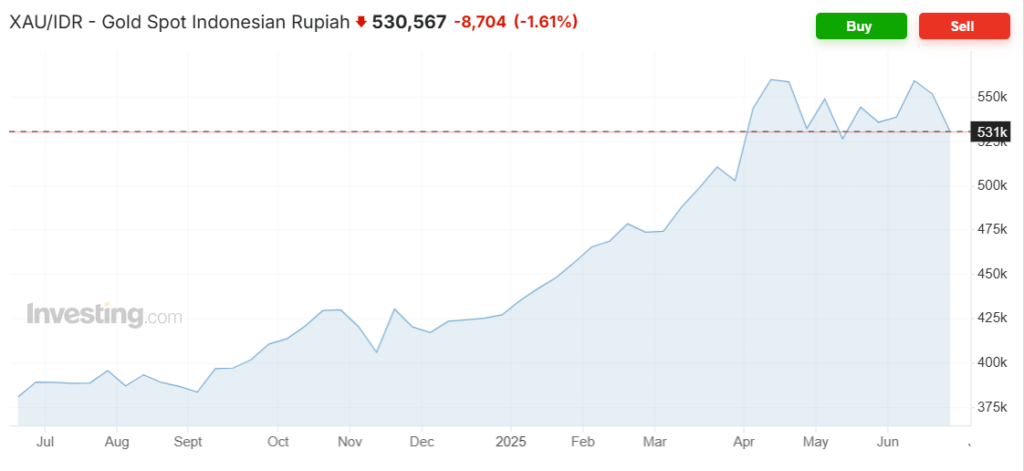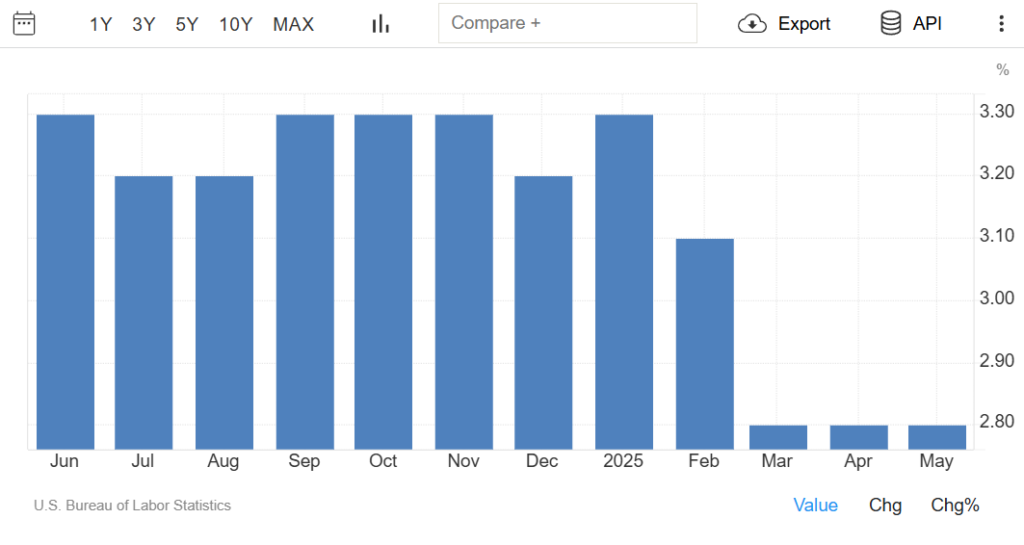From Gold Watchers to Active Traders: How Indonesians Are Engaging XAU/IDR Differently in 2025
Global Bullishness on Gold Fuels Local Trading Activity
Gold has remained resilient in 2025, supported by macro uncertainty, central bank reserve trends, and inflation protection strategies. As gold prices stay elevated, Indonesian traders are shifting focus from passive saving to active speculation. The XAU/IDR pair — once sidelined in favor of USD-based charts — is now drawing attention as more platforms offer IDR pricing. This increased accessibility is changing how traders plan, time, and structure their XAU IDR trading strategy, favoring faster entries and shorter cycles.
IDR Volatility Is Adding Layers to Trade Execution

Source: Investing.com
The Indonesian Rupiah has seen its fair share of fluctuations this year, with movements tied to import costs, monetary tightening, and energy pricing. These domestic drivers create short-lived, high-volatility windows on the XAU/IDR chart. As a result, strategy design is evolving. Instead of treating gold direction as a standalone cue, traders are building XAU IDR trading strategies that account for both ends of the pair — requiring sharper timing and wider awareness of local economic cues.
XAU IDR Trading Strategy: Timing Tactics Are Becoming More Defined

Source: TradingEconomics
In past years, many traders entered XAU/IDR positions based on general chart patterns. But now, there’s a clear preference for trading during known volatility zones — especially between 3 PM and 1 AM WIB, overlapping with London and New York sessions. Some also monitor 8–10 AM WIB, where local news affects IDR behavior. Traders are building strategies around these windows, using tools like the Average True Range (ATR) to set stops and identify volatility zones. This marks a notable shift toward time-sensitive XAU IDR trading strategy planning.
XAU IDR Trading Strategy: Scalping and Momentum Plays Are Replacing Buy-and-Hold Habits

Source: Asia Forex Mentor
Indonesian traders — particularly newer ones — are favoring momentum-based entries, focusing on short bursts of activity rather than long-term gold trends. This is due in part to platform features like micro-lot sizing, mobile trading access, and price alert tools that enable responsive, low-capital trades. Gold is no longer just for hedging or saving — it’s become an active trading target. That’s pushing the average XAU IDR trading strategy toward more agile setups that include breakout alerts, session filters, and real-time event reaction.
XAU IDR Trading Strategy: Platforms and Tools Are Shaping Behavior

Increased support for IDR-denominated gold trading has changed what’s possible. More brokers now offer access to XAU/IDR directly, with funding in Rupiah and locally relevant charting tools. Additionally, several apps allow users to switch between invest emas (gold saving) and trading modes, encouraging hybrid usage. These changes influence how Indonesians interact with the pair — blending longer-term accumulation with short-term trades. It’s no longer just a technical strategy — it’s now partly shaped by platform design.
A Growing Awareness of News Triggers and Macro Events
Event-based trading is gaining traction. U.S. CPI releases, FOMC decisions, and BI policy shifts have become headline events for Indonesian traders. Instead of treating them as noise, traders now build strategies around them — delaying entries until news drops or pre-positioning in anticipation. Economic calendars are increasingly used alongside indicators like RSI or Fibonacci levels. This hybridization shows how XAU IDR trading strategy behavior is expanding to include both macro sensitivity and chart precision.
Conclusion: A New Layer of Sophistication in Gold-Rupiah Trading

Today’s XAU IDR trading strategy reflects a more layered and adaptive approach than what was common even two years ago. Indonesian traders are using tools with more purpose, executing during specific time windows, and combining technical insight with policy awareness. Gold remains the anchor — but the way it’s traded against the Rupiah has changed. It’s no longer just about following gold; it’s about understanding the rhythm between two forces — one global, one local.




